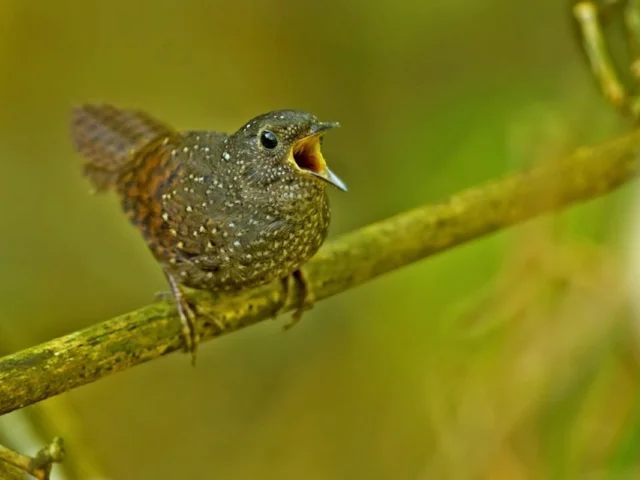While birders are accustomed to DNA analysis identifying new species, it has now uncovered a whole new family.
A Swedish-Chinese team used one of the largest repositories of the DNA sequence data from true passerines to identify the main clades (or evolutionary branches that share a common ancestor).
Several groups were found to be wrongly classified, but one species in particular stood out as being entirely wrongly affiliated – Spotted Wren-babbler Elachura formosa from China. The species was believed to be a member of the babbler family Timaliidae, and was included in the genus Spelaeornis along with eight other similar-looking species.
Spotted Wren-babbler turned out to be different enough to have a new family created for it: Elachuridae. The species is so far out on its own branch as to be the sole representative of one of the 10 primary lineages of the Passerida.
The species is an example of parallel evolution with the true wren-babblers and true wrens, but its song is very different from other Asian passerines, as well as showing a well-supported phylogenetic separation.
For more, see: Alström, P, Hooper, D M, Liu, Y, Olsson, U, Mohan, D, Gelang, M, Manh, H L, Zhao, J, Lei, F, and Price, T D. 2014. Discovery of a relict lineage and monotypic family of passerine birds. Biology Letters 10: doi:10.1098/rsbl.2013.1067
Cryptic single-species bird family discovered
48b72a89-8023-409d-930b-92c66a7cdbe8


